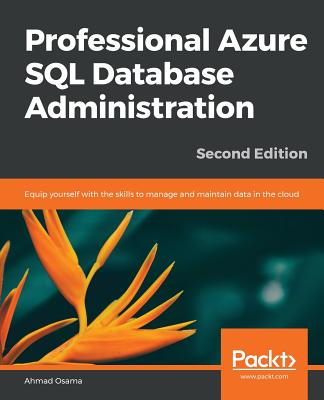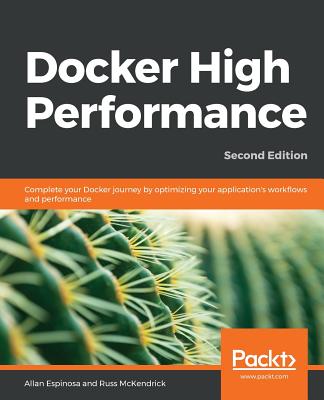Autonomic Computing (Hardcover)
暫譯: 自動計算 (精裝版)
Richard Murch
- 出版商: Prentice Hall
- 出版日期: 2004-04-03
- 售價: $1,360
- 貴賓價: 9.5 折 $1,292
- 語言: 英文
- 頁數: 336
- 裝訂: Hardcover
- ISBN: 013144025X
- ISBN-13: 9780131440258
-
相關分類:
Domain-Driven Design
立即出貨(限量) (庫存=2)
買這商品的人也買了...
-
 $1,304IBM San Francisco Developer's Guide (Paperback)
$1,304IBM San Francisco Developer's Guide (Paperback) -
 SQL 語法查詢百科 (SQL Fundamentals, 2/e)
SQL 語法查詢百科 (SQL Fundamentals, 2/e)$720$569 -
 Visual C#.NET 程式設計經典
Visual C#.NET 程式設計經典$650$514 -
 ASP.NET 程式設計徹底研究
ASP.NET 程式設計徹底研究$590$466 -
 Microsoft Windows Server 2003 系統實務
Microsoft Windows Server 2003 系統實務$780$616 -
 重構─改善既有程式的設計
重構─改善既有程式的設計$720$569 -
 Ant 實作手冊 (Java Development With Ant)
Ant 實作手冊 (Java Development With Ant)$690$538 -
 鳥哥的 Linux 私房菜─基礎學習篇增訂版
鳥哥的 Linux 私房菜─基礎學習篇增訂版$560$476 -
 Eclipse 實作手冊─活用 Java 整合開發環境 (Eclipse in Action: A Guide for the Java Developer)
Eclipse 實作手冊─活用 Java 整合開發環境 (Eclipse in Action: A Guide for the Java Developer)$450$351 -
 人月神話:軟體專案管理之道 (20 週年紀念版)(The Mythical Man-Month: Essays on Software Engineering, Anniversary Edition, 2/e)
人月神話:軟體專案管理之道 (20 週年紀念版)(The Mythical Man-Month: Essays on Software Engineering, Anniversary Edition, 2/e)$480$379 -
 JSP 2.0 技術手冊
JSP 2.0 技術手冊$750$593 -
 Postfix 技術手冊 (Postfix: The Definitive Guide)
Postfix 技術手冊 (Postfix: The Definitive Guide)$720$569 -
 Linux 指令詳解辭典
Linux 指令詳解辭典$650$514 -
 Java 2 500 個高段應用範例技巧大全集
Java 2 500 個高段應用範例技巧大全集$580$452 -
 系統分析與設計理論與實務應用 (Modern Systems Analysis & Design Brief Edition)
系統分析與設計理論與實務應用 (Modern Systems Analysis & Design Brief Edition)$580$458 -
 Solaris 10 徹底研究
Solaris 10 徹底研究$590$460 -
 Java 認證 SCJP 5.0 猛虎出閘
Java 認證 SCJP 5.0 猛虎出閘$650$514 -
 CSS Layout 達人的階梯
CSS Layout 達人的階梯$520$411 -
 SQL 語法範例辭典
SQL 語法範例辭典$550$435 -
 使用 Microsoft Visual Studio 2005 Team System (Working with Microsoft Visual Studio 2005 Team System)
使用 Microsoft Visual Studio 2005 Team System (Working with Microsoft Visual Studio 2005 Team System)$520$406 -
 現代嵌入式系統開發專案實務-菜鳥成長日誌與專案經理的私房菜
現代嵌入式系統開發專案實務-菜鳥成長日誌與專案經理的私房菜$600$480 -
 深入淺出 PMP (Head First PMP)
深入淺出 PMP (Head First PMP)$880$695 -
 Windows Workflow Foundation 新一代工作流程開發實務
Windows Workflow Foundation 新一代工作流程開發實務$550$435 -
 重構-向範式前進 (Refactoring to Patterns)
重構-向範式前進 (Refactoring to Patterns)$750$593 -
 $245Red Hat Enterprise Linux 系統管理
$245Red Hat Enterprise Linux 系統管理
商品描述
Table of Contents:
Acknowledgments.
Preface.
I. AUTONOMIC BEGINNINGS.
II. INDUSTRY DEMAND.
III. AUTONOMIC COMPUTING-MORE DETAIL.
IV. AC MARKETS AND THE FUTURE.
商品描述(中文翻譯)
目錄:
致謝。前言。
I. 自主開始。
1. 自主屬性與重大挑戰。
引言。定義。人類自主神經系統簡介。按需電子商務。自主計算元素。自我配置。自我優化。自我修復。自我保護。開放標準。自主計算—為什麼是現在?自主計算是新事物嗎?如果不改變會發生什麼?創造自主文化。為什麼文化重要?自主計算今天有效嗎?同樣的湯—不同的味道。總結與結論。註釋。
2. 複雜性—各種形式。
引言。我們複雜社會的一些例子。卡通是簡單的。軟體複雜性與災難。什麼是複雜性?複雜性案例研究—IBM。IBM轉型—結果摘要。IT中的複雜性。簡化IT基礎設施。自主計算:解決複雜性的答案之一。複雜性—CIO的敵人。IT複雜性轉型。IT複雜性的成本。企業複雜性評估。目標。基礎設施評估。總結與結論。推薦閱讀。註釋。
3. 自主產品與應用。
引言。IBM的DB2資料庫管理系統。今天的DB2。DB2版本中的未來自主功能。來自Intamission的Autevo。自主空間系統。總結與結論。
II. 行業需求。
4. IT行業—增長與機會的引擎。
引言。快照介紹。IT行業細分基礎。軟體世代。第五世代—幾乎。互聯網—從何而來。經濟放緩—IT預算縮小。軟體預測。2004年及以後的預測。IBM與按需服務。總結與結論。註釋。
5. 快與更快。
引言。互聯網速度的生活。沒有耐心?摩爾定律。商業中的速度。總結與結論。註釋。
6. 人力資本。
引言。美國人口增長與就業趨勢。職業增長。IT勞動市場的動態。IT人員短缺的起源。高科技簽證與立法。IT招聘危機的成本。當前IT失業率。IT技能發展。成功技能管理工作的關鍵。自主計算的技能管理。總結與結論。註釋。
7. 新議程—按需電子商務。
引言。按需電子商務的挑戰。按需電子商務的運營環境。按需電子商務企業的出現。按需電子商務的簡史。按需電子商務案例研究—Teinos。新現實:按需電子商務將持續存在。新議程的要求。總結與結論。
III. 自主計算—更詳細。
8. AC架構。
引言。控制迴路。自主組件描述。自主管理者協作。自主管理者開發。架構—現狀與未來。總結與結論。
9. 自主計算與開放標準。
引言。開放標準的簡史。開放標準的案例—國土安全部。標準類型—專有與開放。網路服務互操作性標準組織。自主計算的重要標準。自主計算的新標準。開放標準與IBM產品組合。按需電子商務服務提供商業務。NGOSS作為框架。總結與結論。註釋。
10. 自主實施考量。
引言:採取行動—做好準備。IT人員接受的障礙。今天誰在使用自主計算?演變,而非革命。自主評估。自主與指標。開發軟體。總結與結論。註釋。
11. 網格計算—一項促進技術。
什麼是網格?網格今天正在使用。網格計算的好處。未充分利用的資源可以被開發。哪些應用運行在網格上?網格類型。軟體與許可證。網格與開放標準。網格與自主計算。推薦閱讀。
12. 自主開發工具。
引言。IBM新興技術工具包。自主計算與開源。IBM對開源的承諾。使用開源的自主計算。問題判定—自主計算的日誌與追蹤分析器。異構工作負載管理:商業工作負載管理原型。解決方案啟用器。軟體代理。自主代理技術。總結與結論。註釋。
13. 獨立軟體供應商。
軟體供應商面臨的挑戰時期。新的ISV議程。ISV推動自主市場。早期採用者與IBM。ISV的樣本清單。工具與模板。自主計算商業夥伴計畫。與Cisco的自主聯盟。收購Think Dynamics。總結與結論。註釋。
14. 其他供應商。
引言。Sun-N。Microsoft—動態系統倡議。Microsoft、HP與動態數據中心。可信計算。HP—自適應企業。Intel—主動計算。與Cisco的自主聯盟。其他管理軟體。總結與結論。註釋。
15. Tivoli管理套件—自主特性。
引言。自我配置。自我修復。自我優化。自我保護。Tivoli案例研究與成功故事。HSBC Trinkaus & Burkhardt Kgaa。Santix AG。總結與結論。註釋。
IV. AC市場與未來。
16. 小型企業與個人計算。
引言。小型企業在經濟中的角色。小型企業技術的增長。IBM與小型企業。SMB與自主計算。自主個人計算。超越IT行業的自主計算。總結與結論。註釋。
17. 自主研究挑戰。
引言。研究挑戰。自主元素的生命週期。自主元素之間的關係。科學挑戰。自主計算的研究項目。自主計算的大学研究项目。總結與結論。註釋。
18. 最後的想法。
引言。一切都關於速度。當前自主計算的狀態。過去與現在。未來建議。結論。
自主術語詞彙表。
索引。






























